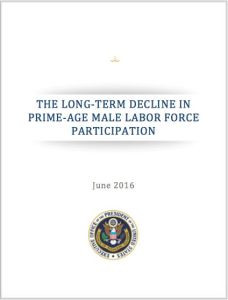Únase a getAbstract para acceder al resumen.

Únase a getAbstract para acceder al resumen.
White House Council of Economic Advisors
The Long-Term Decline in Prime-Age Male Labor Force Participation
White House, 2016
¿De qué se trata?
Why are more and more American men jobless and not looking for employment?
Recommendation
Prime-age male labor participation has trended downward, globally, for decades, but why is the decline in the United States particularly severe? This 2016 analysis by the Obama administration White House uses statistical evidence to help uncover reasons behind the decline. Additionally, the report explains how institutional factors contribute to the negative trend and which policy changes could improve the situation. getAbstract recommends its findings to those interested in socioeconomic trends.
Summary
About the Author
The White House Council of Economic Advisers is an agency within the Executive Office of the President that advises the US president on economic policy. This report was produced during the Barack Obama administration.

















Comment on this summary